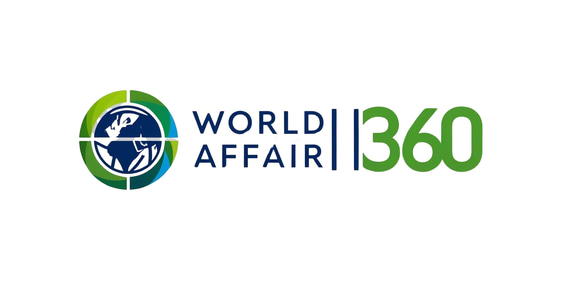Former Pakistan Ambassador Predicts PAF’s Superiority with Chinese J-35 Jets
Former Pakistan Ambassador to India, Abdul Basit, believes that the Pakistan Air Force (PAF) could surpass the Indian Air Force (IAF) by 6-8 years with the induction of China’s J-35 stealth fighter jets. The J-35, known for its advanced stealth technology and superior avionics, would significantly enhance the PAF’s capabilities, potentially altering the air power balance in South Asia. Currently, the IAF is considered superior, operating advanced jets like the French Rafale and Russian Su-30MKI, while the PAF relies on older models like the F-16 and JF-17. However, the J-35 could narrow the technological gap between the two forces, especially in terms of stealth and radar evasion. Meanwhile, India is working on its own 5th-generation aircraft, the **Advanced Medium Combat Aircraft (AMCA)**, set for deployment in the 2030s, along with potential upgrades in collaboration with Russia on the Su-57. India’s plans to bolster its air force with next-generation fighter jets reflect its intent to maintain air superiority. The introduction of the J-35, however, might prompt India to fast-track these efforts. In conclusion, the competition between the IAF and PAF will continue to evolve, with both nations racing to modernize their air forces through advanced technologies.
DEFENSE & MILITARYINDIA


Former Pakistan Ambassador Predicts PAF’s Superiority with Chinese J-35 Jets
In a recent statement, former Pakistan Ambassador to India, Abdul Basit, made a bold prediction regarding the future of the Pakistan Air Force (PAF). He stated that with the induction of China's J-35 fighter jets into the PAF fleet, Pakistan's air capabilities could surpass the Indian Air Force (IAF) by 6 to 8 years. The assertion comes amidst growing military developments in the region, with both India and Pakistan enhancing their defense technologies.
J-35: A Game-Changer for Pakistan
Basit’s statement centers on the J-35, a Chinese fifth-generation stealth fighter jet that is poised to enhance the PAF’s aerial capabilities. The J-35, which is known for its advanced stealth technology, agility, and cutting-edge avionics, is expected to be a game-changer for Pakistan's air superiority. According to Basit, the introduction of the J-35 could significantly narrow the technological gap between Pakistan and India, placing the PAF ahead of the IAF in terms of air combat prowess.
Basit highlighted that the J-35’s stealth features, along with its advanced radar and weapons systems, will provide Pakistan with a substantial edge over the IAF, especially in the context of future aerial confrontations. He further emphasized that this leap in technology could position Pakistan as a formidable air power in the region, effectively altering the balance of power in South Asia.
Current Comparison: Pakistan vs. India Air Forces
As of now, the Indian Air Force (IAF) is considered superior to the Pakistan Air Force (PAF) in terms of fleet size and technological capabilities. The IAF operates a diverse range of advanced fighter jets, including the French-made Rafale, Russian Su-30MKI, and indigenous Tejas fighters. In comparison, the PAF’s fleet is smaller, with significant reliance on older models such as the F-16 and JF-17 Thunder, which is jointly developed with China. While Pakistan has invested heavily in modernizing its fleet, including the induction of more Chinese-made J-10s, it still lags behind India in overall technological edge and fleet size.
However, the addition of the J-35 could shift this balance, potentially giving the PAF a technological advantage over the IAF in the realm of stealth and radar evasion. The J-35’s advanced radar-absorbing materials and electronic warfare systems could allow Pakistan to challenge India’s air dominance, particularly in high-tech combat scenarios where stealth is crucial.
India’s Plans to Introduce 5th-Generation Fighter Jets
While Pakistan prepares to introduce the J-35, India is also ramping up its efforts to modernize its fleet with 5th-generation fighter jets. The Indian government has already approved the development of its indigenous Advanced Medium Combat Aircraft (AMCA), which is expected to enter service in the early 2030s. The AMCA is being designed as a stealth fighter capable of matching international standards in radar-evading technology, thrust vectoring, and advanced avionics.
Additionally, India may collaborate with Russia on the Su-57, a 5th-generation fighter, which could further enhance the IAF’s capabilities in the coming years. The Su-57, with its advanced avionics, radar systems, and supercruise capabilities, can be a major asset to the IAF once it enters service. Additionally. India may consider negotiating with United State for F-35 Jets, which will not only tilt the balance in favour of India but also can counter China's growing airforce might.
India’s efforts to bring these 5th-generation aircraft to operational status demonstrate the country’s ambition to stay ahead of Pakistan in terms of technological advancements. However, the question remains whether these new planes can arrive in time to counteract the potential impact of the J-35 on Pakistan’s air strategy.
Conclusion: A Shifting Balance in the Skies
As tensions between India and Pakistan persist, military developments such as the potential induction of the J-35 into the PAF could significantly alter the strategic balance in the region. While the IAF currently maintains an edge over the PAF, Pakistan’s possible leap ahead with the J-35 could force India to accelerate its own plans for 5th-generation fighter jets. The competition between both nations’ air forces will likely continue to escalate, with technological advancements serving as the key factor in future air dominance.
In the end, whether Pakistan or India can maintain superiority in the skies may come down to how quickly each nation can modernize and deploy next-generation aircraft. The race for air dominance in South Asia is on, and it will be fascinating to see which nation ultimately gains the upper hand in the coming years.
This blog post captures the main points of the article while adding a deeper comparison of both countries' air forces and highlighting India’s ongoing efforts to introduce 5th-generation fighter jets.
